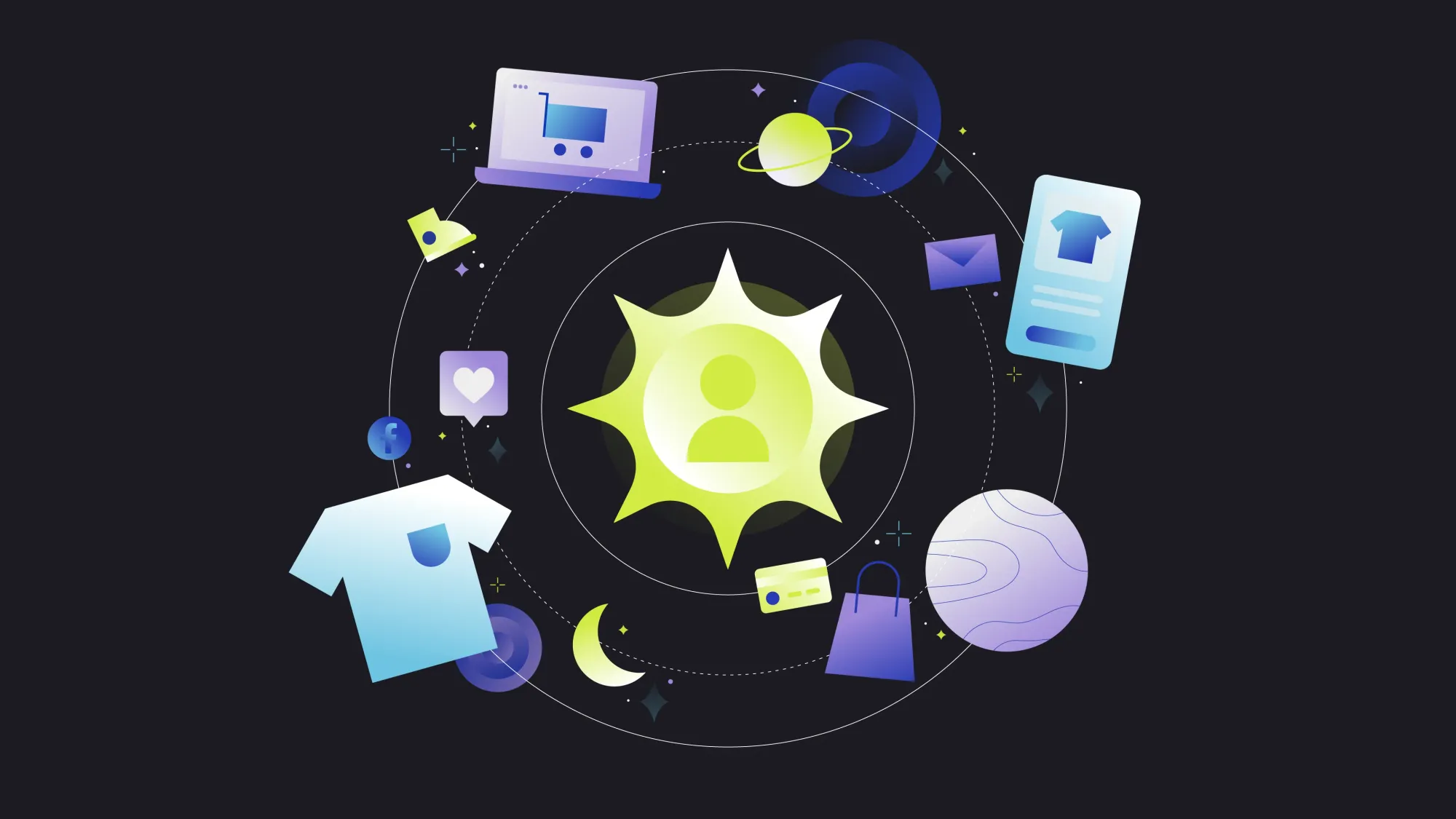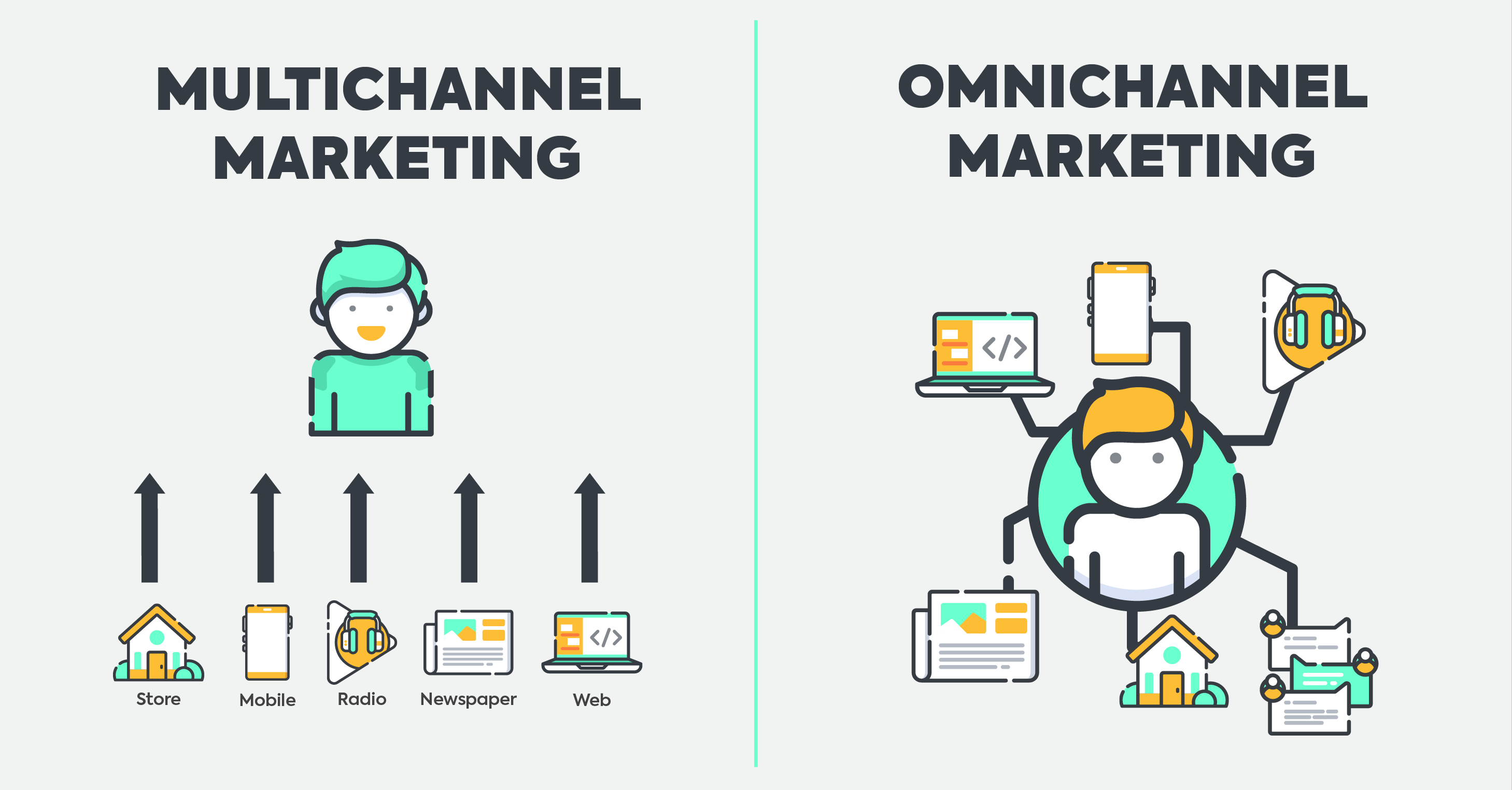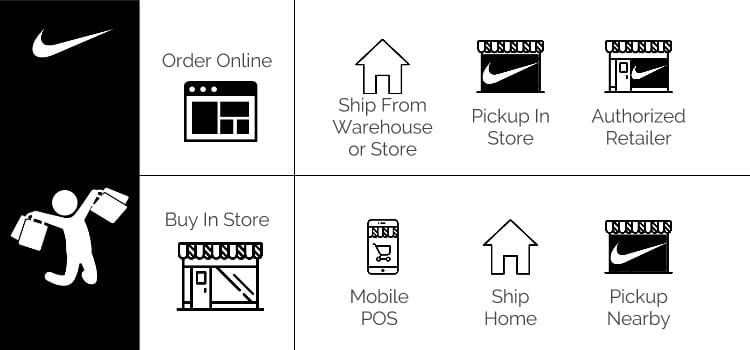
In simple terms, Omnichannel is a term used in e-commerce and retail to describe a business strategy that aims to provide a seamless shopping experience across all channels, including in-store, mobile, and online.
It's no longer just the brick-and-mortar thing now; the global technological shift has taken brands and consumers to the so-called "digital (convenient) market," where consumers have the whole global market at their fingertips. Consumers have simply become more fortunate, as companies are looking to seize every opportunity to provide their customers with convenience and get paid for it. This online shopping gave brick-and-mortar a breakthrough, which led brands to shift their focus to the online retail market and build more strategies around that. No wonder, digital marketing is becoming the next big thing. However, there are always two sides to a tale. Although the online retail market was booming, many consumers were not satisfied with the quality of products, creating a dilemma where they had to choose between convenience and experiencing the product firsthand. Now that the market has expanded into multiple channels (multichannel), striking a balance through omnichannel strategies has become crucial. Omnichannel retailing incorporates multiple shopping channels, providing a seamless and consistent customer experience across platforms.
The Essence of Omnichannel Retailing
Understanding Omnichannel Retailing:
In simple words, Omnichannel retailing is about creating a unified shopping experience regardless of the channel customers use. Let us understand it with an example: a customer visits your website from a smartphone, continues browsing products in your mobile app, inquires whether you make customized products on your support email, ensures the quality of your product in your store, and then buys it without any disruptions to their experience. Today, your modern-day customer expects a seamless journey from one touchpoint to another, reflecting the importance of connectivity and uniformity across all channels.

Key Benefits of Omnichannel Retailing
- Improved Customer Experience
According to CX Today, 9 out of 10 consumers want omnichannel service. Today's customers seek a special, personalized touch from your brand. This requires a consistent approach, including offering tailored deals crafted specifically for them, ensuring a uniform experience both in-store and online, simplifying the purchasing process across all channels, providing customizable products, offering 24/7 customer service, and maintaining personalized communication. A unified omnichannel approach meets these expectations, alleviating the frustration of disjointed experiences and boosting customer satisfaction and loyalty.
- Increased Sales and Customer Retention
It is evident that brands employing omnichannel strategies often see a significant boost in sales. This is because omnichannel customers tend to spend more compared to single-channel customers. By providing multiple channels for engagement, you can reach a larger audience and encourage repeat purchases. According to Harvard, a study of 46,000 shoppers shows that omnichannel retailing works. Within six months after an omnichannel shopping experience, these customers had logged 23% more repeat shopping trips to the retail stores and were more likely to recommend the brand to family and friends than those who used a single channel.
- Better Inventory Management
Enhanced inventory management is one of the primary benefits of omnichannel retailing. This is best demonstrated by Zara, which uses a centralized inventory system that offers real-time stock visibility across warehouse, in-store, and online channels. Their system makes sure that products are available from convenient locations by supporting various fulfillment options like click-and-collect and ship-from-store. The seamless in-store return of online purchases is another benefit of integrated returns management, which improves customer satisfaction. This effective inventory management optimizes stock levels, decreases shortages, and increases customer satisfaction.
- Data-Driven Personalization
Collecting and analyzing data from various channels enables brands to gain deeper insights into customer behavior. This data can be used to personalize marketing efforts and provide tailored shopping experiences, further enhancing customer satisfaction and driving sales. For example, you can use data analytics to determine your customers' favorite times of day to shop (perhaps on their payday), offer them special discounts on items they added to their carts but did not purchase, and use their purchase histories to launch daily targeted promotions and one-time deals. All this data-driven personalization connects them with your brand. However, it's important to note that 71% of consumers feel frustrated when a shopping experience is impersonal, says Segment. This emphasizes the need for effective personalization strategies.
Long story short, modern customers expect a seamless omnichannel journey. You can't be dependent just on your single-channel strategy. You may be confident in your ongoing channels, which may be either your brick-and-mortar store or your online store, but you need an omnichannel to sustain yourself in this competitive market. Companies that fail to meet these customer demands risk being sidelined. For your customers, switching to another company is just a click away. Let’s retain your customers by developing a robust omnichannel strategy for your business.
According to a Coresight report, 74% of retailers have either started on their omnichannel strategy or have already implemented it.
Strategies for Successful Omnichannel Retailing
1. Understand the customer's mode of interaction:
To implement an effective omnichannel strategy, you must understand where your customers prefer to shop and how they interact with different channels. This involves analyzing customer data to identify popular touchpoints and optimizing these for a seamless experience. For example, if data shows that a significant portion of your customers frequently use mobile apps for shopping, you should invest in enhancing the app's functionality and user experience.
2. Consistent Branding Across Channels:
Consistency is key in omnichannel retailing. You must ensure that your messaging, aesthetics, and overall experience are uniform across all channels. This helps in building brand recognition and trust. Your social media page, website, and physical store should all reflect the same brand values, colors, logos, and tone of voice to create a cohesive identity. A prime example of consistent branding across channels is Apple. Whether a customer visits Apple's website, social media pages, or physical stores, they encounter a uniform experience. The clean, minimalist design, sleek visuals, and distinctive tone of voice are consistent across all platforms. This highlights the importance of consistent branding in omnichannel retailing, ensuring a cohesive identity that resonates with customers.
3. Integration of Systems:
Integrating IT systems such as ERP (Enterprise Resource Planning), CRM (Customer Relationship Management), and POS (Point of Sale) is crucial for providing a seamless omnichannel experience. For example, Nike's CRM system tracks customer interactions across all platforms, enabling personalized communication and offers. When a customer, let's say, Sarah, browses Nike's website, the CRM records her activity. In-store, store managers access this data to provide tailored assistance. Sarah receives personalized emails with product recommendations and exclusive discounts based on her browsing and purchase history. Nike's CRM integrates with social media, delivering targeted ads and notifications about special events. After purchases, Sarah gets thank-you notes and invitations for feedback, leading to customized follow-up content. This seamless integration enhances Sarah's shopping experience, increases sales, and builds loyalty, showcasing the power of a well-integrated CRM system. Omnichannel allows retailers to achieve more availability, drive sales and traffic, and integrate digital touchpoints, which is essential for modern retail success.
4. Incorporate interactive technology
According to the Coresight report, business leaders expect interactive technologies to improve the in-store experience by boosting engagement and providing shoppers with actionable information. 22% of respondents said that using AI, AR, and VR is the most important way to connect with shoppers. This issue for the integration of interactive technology can be solved with 3D customization and visualization using thob.studio. thob 3D Studios provide a 3D immersive shopping experience for your business with 3D assets packed in an asset library, creating 3D interactive experiences where your customers are able to visualize and customize their product in real-time, creating a personalized effect.
5. Build a Virtual Store
By building a virtual store, your brand gains a competitive edge with immersive shopping experiences, personalized service, and enhanced customer engagement. A virtual store offers an immersive online shopping experience with features like 3D product visualization and AR try-ons, replicating and enhancing the physical shopping experience digitally. At Thob 3D Studios, we help brands build sophisticated virtual stores with responsive design and seamless e-commerce integration. This allows customers to enjoy the convenience of online shopping while experiencing the same immersive environment as a physical store. This approach enhances customer engagement, strengthens brand loyalty, and drives sales, making a virtual store an essential component of a modern omnichannel strategy.
Examples of Omnichannel Success
Nike
Nike ensures a consistent brand experience across its app, website, and physical stores, promoting empowerment and high-quality products. The brand's omnichannel strategy includes features like mobile apps that offer exclusive content, in-store experiences that integrate digital elements, and seamless transitions between online and offline shopping.

Jaguar Land Rover
Jaguar Land Rover excels in omnichannel strategy by offering seamless vehicle customization online, integrated appointment scheduling, and personalized marketing across digital and physical channels. Their website enhances engagement with virtual tours and exclusive offers, while integrated CRM systems ensure efficient customer service and ongoing post-purchase support, fostering loyalty and satisfaction at every touchpoint.
The bottom line is that omnichannel retailing has evolved from a luxury into a necessity for modern brands. By delivering a seamless, integrated, and immersive shopping experience, you can enhance customer satisfaction, boost sales, and foster long-term loyalty. Adopting an omnichannel strategy requires understanding customer preferences, ensuring consistent branding, integrating systems, and personalizing interactions. As consumer expectations continue to evolve, omnichannel retailing will remain a crucial strategy for success in the retail industry.
